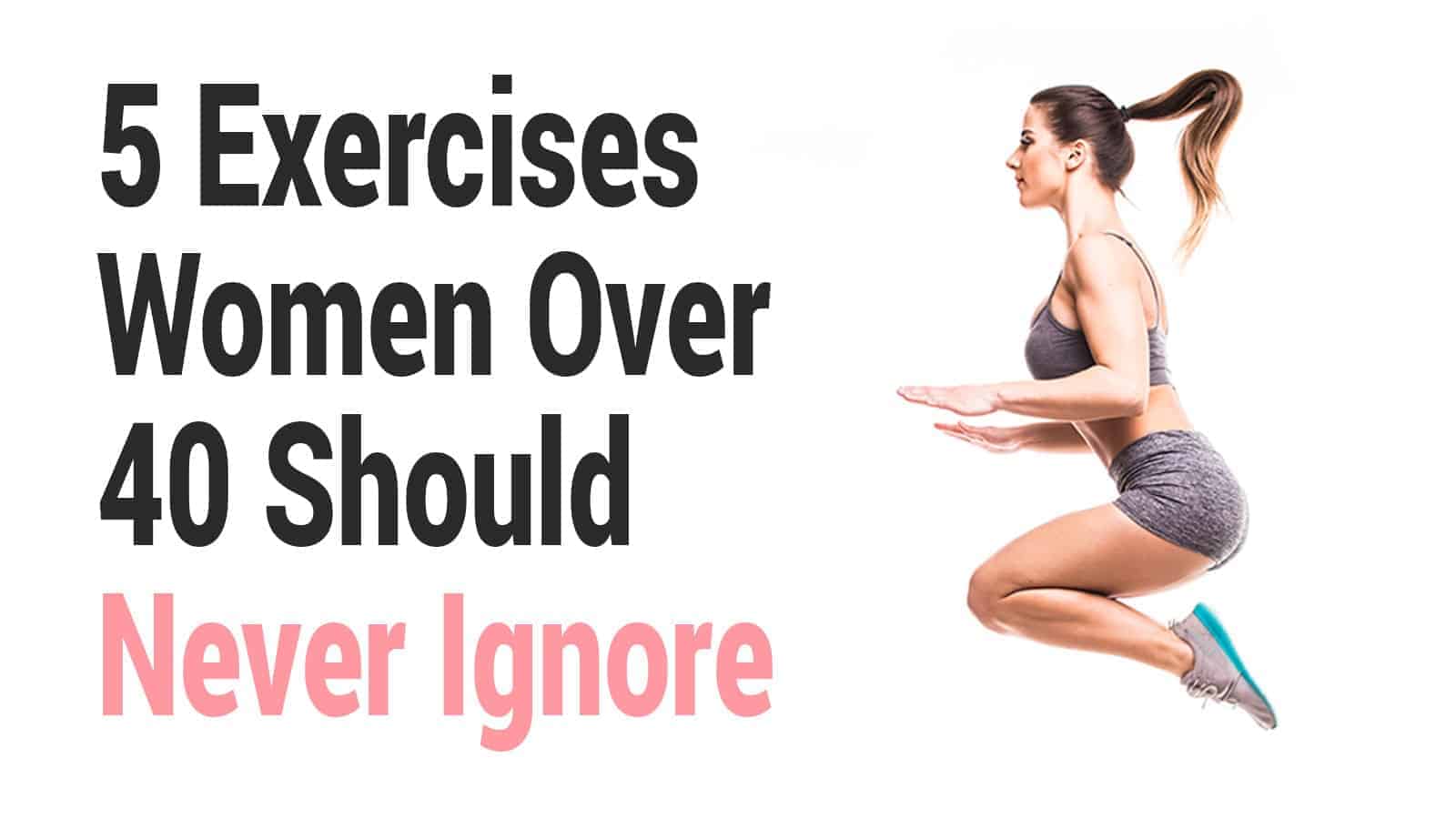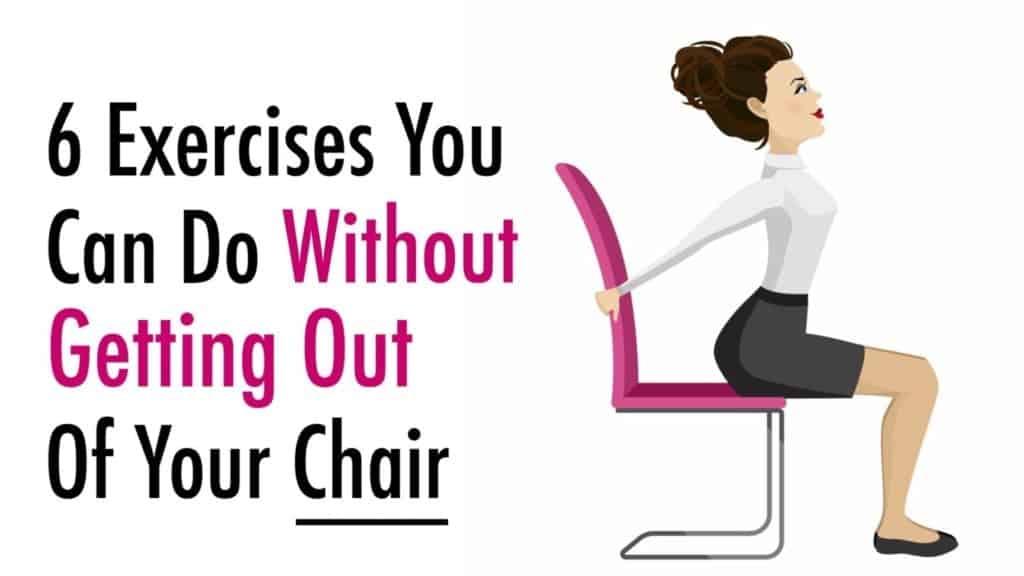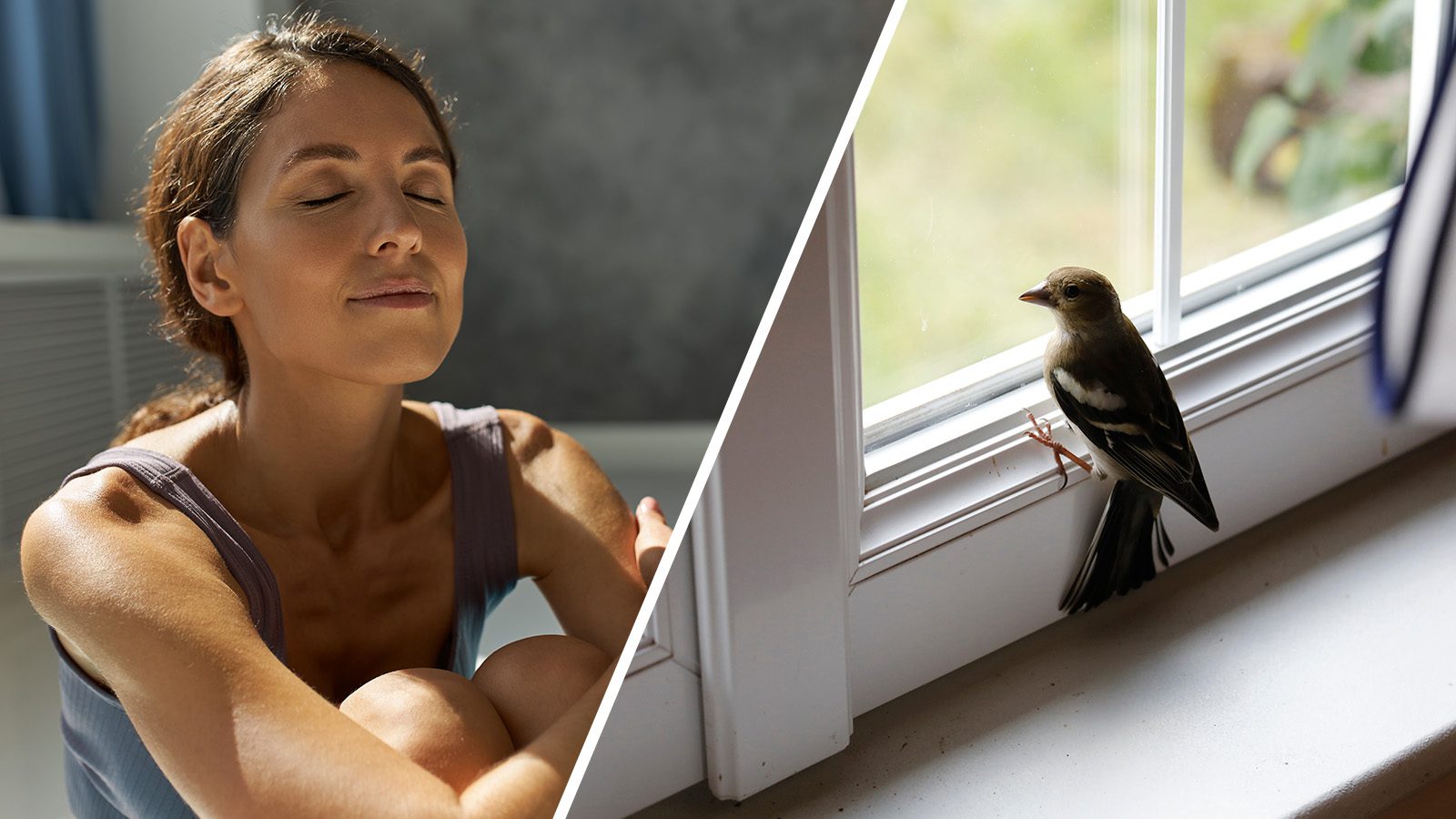Aging is a difficult and complex process. If you’re not caring for your body with proper exercises and self care, by the age of 40, you may begin to see a downward spiral. You’ll have aches and pains in new places, notice lowered mobility, and even deal with new mental health issues.
But there is a way to work with the aging process, making it more graceful and less detrimental to you: exercise! Many exercises have been scientifically proven to provide positive results for women of a certain age.
Here Are 5 Exercises Women Over 40 Should Never Ignore
1. Squats
Big butts go in and out of fashion with the years, and with them squats gain and lose popularity time and time again. But squats aren’t just about getting a round, prominent backside – they’re great for lots of things, including:
a) Muscle Building
Squats are a unique exercise that creates a great anabolic response in the body that promotes better muscle building all over the body. So not only do they give you stronger, toned legs, but the entire body benefits.
We tend to lose muscle mass as we age, so if you’re over 40, you’ll want to add squats to your routine.
b) Flexibility
Age causes the body’s components to lose their elastic qualities. That’s why working to boost your overall flexibility works wonders. Squats provide the ability to increase your limberness as you bend and stretch your legs for the best workout.
c) Mobility
Without strong legs, it becomes trickier to move around when you get older. Squat exercises can help provide strength to your lower body, and the extra attention they put on the core can make your center stronger.
d) Balance
The same muscles you build through squats that help your mobility also help your balance. Plus, training your body this way improves the communication that occurs between the muscles and brain, so you have better, faster response times to avoid accidents.
e) Calorie Burning
The muscles you build from performing squats allow your body to become better and more efficient at burning fat and calories. If you do your squats with weights, there will be even more benefits. Weight gain is a customary part of getting older, so squats fight the process.
f) Injury Prevention
A lot of injuries happen due to weak muscles, ligaments, and tissues. With the strengthening abilities that squats provide, you can avoid these injuries, which become more prevalent as you age.
g) Heart and Lung Health
When you do squats, your cardiac muscles gradually gain strength, and your lung capacity will start to increase the more you workout. This helps you to keep these organs strong, preventing disease risk.
Of course, you have to do squats the right way to get these results. Here’s how to do a proper squat that yields amazing results!
- Start by standing straight with your feet shoulder-width apart, or wider if desired.
- Hold your arms out straight in front of you. Alternatively, bend your elbows, or simply clasp your hands together ahead of you.
- Lower yourself down in a sitting motion, as if you’re trying to sit on an invisible chair. Remember, your head should stay looking forward the entire time. Your lower back should arch ever so slightly as you lower yourself, and your upper body should bend forward a little bit.
- Get yourself as low as you can until your thighs are parallel to the floor, knees set above your ankles. Put your weight on the heels of your feet.
- Hold the position for around 10 seconds, or start with less and work your way up to a desired length.
- When ready to return to your original position, push up through your heels so you’re back where you started.
- Do about 10 reps and 3 sets, and slowly add reps as you become better at the exercise.
2. Planks
Planks are great for full body exercise, and they’re especially good for guarding against back pain. Many individuals develop some degree of chronic back pain between 30 and 40 years old, so planking is definitely one of the exercises women over 40 should never ignore.
Planks work well because they provide added core strength, and they tone those core muscles extremely well. This exercise provides a great ab workout while also helping muscles in the chest and back, which then allows your mid-torso area to tighten and become strong.
Planks will give your lower back the additional support it needs to avoid pain as you age, explains personal trainer Holly Perkins.
There are a few different ways to do a plank, ranging from the most common, standard way to easier ways that you can start with if you’re having trouble with the exercise move.
a) Variation 1: Normal Plank
This is the standard type of plank that provides the best results.
- Start in a push-up like position. Your hands should be beneath your shoulders, just a little wider apart than shoulder width.
- Press your toes against the floor, squeezing your glute muscles, using these areas to keep yourself balanced. Make sure your knees are not hyperextended or locked.
- Keep your spine and neck in a neutral position. This is best accomplished by focusing on a chosen area in the floor above you, just around a foot in front of your hands. Make sure, also, that your head is lined up with your back.
- Hold the position. Start with just 20 seconds if you have trouble, and work your way up to 90.
b) Variation 2: Forearm Plank
A slightly easier variation, the forearm plank is highly popular due to the fact that it still provides a good workout while being easier on your body while you build muscle.
- Rest your forearms on the floor, making sure your elbows are well-aligned under your shoulders.
- Keep your arms at a parallel position to your body, about a shoulder width away from your torso.
- Clasp your fingers together. You can also place your palms flat against the floor.
- Keep your spine and neck in a neutral position. This is best accomplished by focusing on a chosen area on the floor above you, just around a foot in front of your hands. Make sure, also, that your head is lined up with your back.
- Hold the position. Start with just 20 seconds if you have trouble, and work your way up to 90.
c) Variation 3: Knee Plank
This is a very easy variation of the standard plank, so if you’re a beginner to the fitness world, it’s a great position to start with! Plus, it allows you to be extra aware of your form, so when you transition into a more difficult plank, you’ll do it in the right way.
- Rest your knees on the ground. This keeps stress out from the lower region of your back. If you like, you can rest them on a rolled towel or mat.
- Your hands should be beneath your shoulders, just a little wider apart than shoulder width, in a push-up-like position.
- Keep your spine and neck in a neutral position. This is best accomplished by focusing on a chosen area in the floor above you, just around a foot in front of your hands. Make sure, also, that your head is lined up with your back.
- Hold the position. Start with just 20 seconds if you have trouble, and work your way up to 90.
3. Strength Training and Weight Lifting
Joint pain, stiffness, and arthritis become more likely to develop the older you get, especially if you’re also carrying some extra weight or have suffered a previous injury to your joints. One of the best ways to fend off this impending threat is through strength training, as well as through weight lifting.
Strength training doesn’t necessarily have to involve lifting dumbbells (that falls under weight lifting), and it can just consist of a few simple moves. Some of these moves will be made more effective with weights, but it isn’t necessary to use them. Here are some common exercises you can do.
- Push-up
- Squat
- Plank
- Burpee
- Mountain climber
- Lunge
- Wall sit
- Calf raise
- Step up
- Jumps
- Kicks
- Limb raises
- Superman
- Tricep dip
- Arm circles
- Crunches
- Glute bridge
These are all just suggestions – there are plenty of amazing workout options to choose from!
Lifting weights and performing any kind of strength training can relieve pain in those with arthritis, as well as prevent pain from occurring and even ward off arthritis for good. The lack of pain will improve many aspects of your life as you age, including energy levels, mobility, and positive thinking.
4. Yoga Exercises
From the ages of 45 to 64, women have a higher chance of developing depression, says John Hopkins Medicine. Yoga has been proven to have positive effects on the mood thanks to its boosting of GABA, which is a neurotransmitter that helps regulate your moods – and one that tends to be absent in those with depressive disorders.
Studies have shown that yoga is effective at boosting positive thinking in women with some degree of mental struggle within a three-month period. As such, it’s safe to say that yoga reduces stress, and stress levels can affect a variety of mood disorders. The fact that it also strengthens you and boosts your flexibility is a much-appreciated bonus!
5. Burpees
Burpees sound a little intimidating. After all, these exercises are high-intensity moves that focus on the cardiovascular system. But these types of moves are crucial when you’re over the age of 40, as they help keep the heart healthy and keep your metabolism up. This prevents weight gain, and it also lowers disease risk – both through cardiovascular strengthening and positive weight management.
That’s why it’s recommended that you do at least 30 minutes of high-intensity workouts between three and four times weekly, getting your heart up to 80% of its max rate. Burpees are a great way to do that! Here’s how to perform them correctly.
- Squat over the floor, or bend down, and rest your palms flat on the floor in front of you. Have them placed just slightly farther apart than your feet.
- Jump backwards onto your feet, moving into a plank position.
- Move downwards into a push-up like position, but have your chest touch the floor. If you are new to strength training and struggling with the weight, you can also drop to your knees instead of a plank position.
- Push back up into your previous position – whether a standard plank or a knee plank.
- Jump back inwards with your feet towards your hands, so you are close to your original starting position.
- Jump upwards into the air in an explosive fashion, with your arms stretched up high overhead.
Final Thoughts On Some Exercises Women Over 40 Should Never Ignore
Exercise is crucial to bodily health, so it makes sense that there are kinds you can use to help your aging process go more smoothly. Remember, it’s always a good idea to check with a doctor before beginning a new exercise routine – especially if you have a pre-existing health condition.
Most importantly, don’t overwork yourself! These exercises can be tricky at first, but take it slow and work your way up to avoid injury. With time, dedication, patience, and positive thinking, you’ll soon notice amazing improvements all over your body.
















